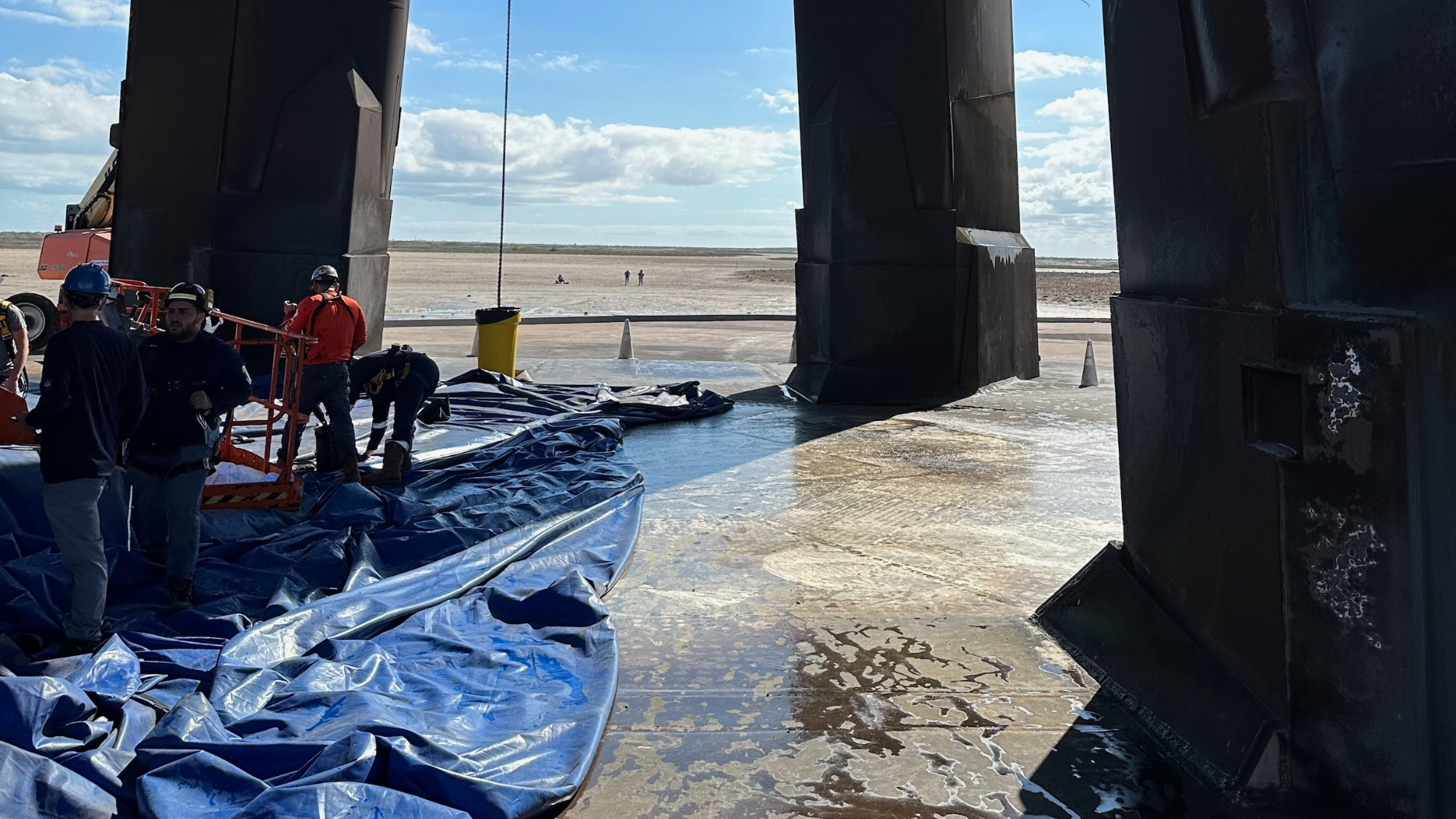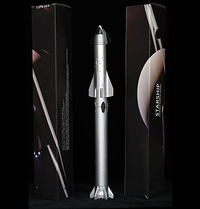
SpaceX's Starship launch pad appears to have passed its second trial by fire.
The pad, at SpaceX's Starbase site in South Texas, took a beating on April 20, during the first-ever test flight of a fully stacked Starship vehicle. The huge rocket's 33 first-stage Raptor engines blasted out a big crater beneath the pad that day, sending chunks of concrete and other debris high into the Texas sky.
SpaceX installed a water-spewing steel plate beneath the pad in the aftermath of the debut flight, to prevent such damage from happening again. The new plate was tested on Saturday (Nov. 18), when Starship lifted off for the second time ever — and it did its job well, according to company founder and CEO Elon Musk.
"Just inspected the Starship launch pad and it is in great condition! No refurbishment needed to the water-cooled steel plate for next launch. Congrats to @SpaceX team & contractors for engineering & building such a robust system so rapidly!" Musk said on Sunday (Nov. 19) in a post on X (formerly known as Twitter).
Related: SpaceX's 2nd Starship launch test looks amazing in these stunning photos and videos
SpaceX is developing Starship to help humanity extend its footprint to the moon and Mars. The nearly 400-foot-tall (122 meters) rocket-spaceship combo is designed to be fully and rapidly reusable, the key breakthrough that Musk believes will make such ambitious exploration feats feasible.
Both of Starship's test flights aimed to send the upper-stage spacecraft most of the way around Earth; splashdown was targeted for the Pacific Ocean near Hawaii, after an eastward flight across the Gulf of Mexico and beyond. Neither flight succeeded in this goal, though number two notched some significant milestones.
Get the Space.com Newsletter
Breaking space news, the latest updates on rocket launches, skywatching events and more!
Saturday's flight lasted twice as long as the April jaunt, for example — eight minutes compared to four minutes. And Starship's two stages separated successfully on Saturday, a major success that the vehicle did not achieve on its debut mission.
Starship Die Cast Rocket Model Now $69.99 on Amazon.
If you can't see SpaceX's Starship in person, you can score a model of your own. Standing at 13.77 inches (35 cm), this is a 1:375 ratio of SpaceX's Starship as a desktop model. The materials here are alloy steel and it weighs just 225g.
Note: Stock is low so you'll have to act quickly to get this.
More progress could be coming soon: The Starship vehicle that will conduct the third test flight should be ready, from a technical standpoint, to lift off in just three to four weeks, Musk said over the weekend.
That doesn't necessarily mean we'll see another Starship mission in 2023, however. SpaceX still needs to secure a launch license from the U.S. Federal Aviation Administration (FAA), which is overseeing an investigation into Saturday's flight.
Join our Space Forums to keep talking space on the latest missions, night sky and more! And if you have a news tip, correction or comment, let us know at: community@space.com.

Michael Wall is a Senior Space Writer with Space.com and joined the team in 2010. He primarily covers exoplanets, spaceflight and military space, but has been known to dabble in the space art beat. His book about the search for alien life, "Out There," was published on Nov. 13, 2018. Before becoming a science writer, Michael worked as a herpetologist and wildlife biologist. He has a Ph.D. in evolutionary biology from the University of Sydney, Australia, a bachelor's degree from the University of Arizona, and a graduate certificate in science writing from the University of California, Santa Cruz. To find out what his latest project is, you can follow Michael on Twitter.










